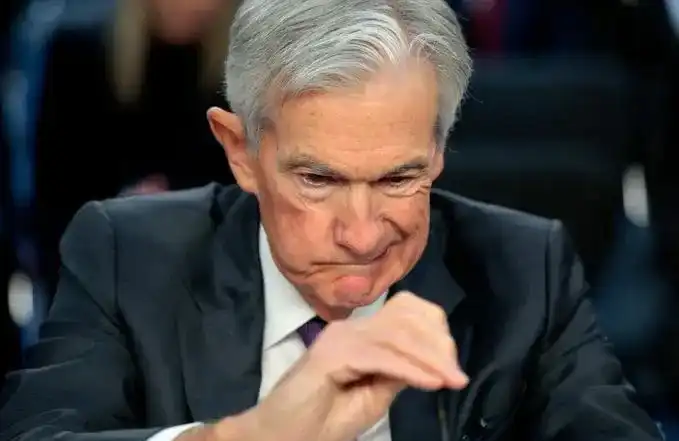Strategic Reserve and Power Play: The Crypto Order of the Trump Era
Original Title: "Strategic Reserves and Power Play: The Crypto Order of the Trump Era"
Original Author: Zeke, YBB Capital Researcher

Foreword
For President Trump, the world is a massive real-life version of "The Apprentice." In less than a month in office, from internal agency staff to foreign leaders, many have already received the pink slip from Trump with "You're fired" written on it. As the remaining four years of the show unfold, how will Crypto as a key guest successfully level up? Perhaps we need to start by understanding this boss first.
1. The Market Loves Surprises, but I Must Control the Pace
In Trump's autobiography "The Art of the Deal," "controlling the pace" and "creating surprises" form the core pillars of his negotiation philosophy. The intertwined use of these two strategies both built his early business empire and set the tone for his later political maneuvers.
● "Controlling the Pace": Original quote from the book: "In a deal, you have to lead the way. If you let the opponent control the timing, you have already lost half the game."
● "Creating Surprises": Original quote from the book: "Surprise is a decisive factor. When the opponent thinks you are compromising, launch a surprise new demand—this will disrupt their formation."

Looking back at classic negotiation cases from Trump's early business days, starting from the 1976 New York Hyatt Hotel project, Trump demonstrated absolute control over the negotiation pace. When the city government asked him to bear the cost of subway station renovation, he threatened to withdraw from the negotiation to create a sense of urgency—by suddenly announcing a halt to construction three days before the city budget deadline, he forced the New York City Council to urgently pass a tax relief plan, ultimately increasing the government subsidy from $40 million to $120 million.
In the 1983 Trump Tower project, he took the art of delay to the extreme: when the project was 90% complete, he suddenly sued the contractor for construction delays, taking advantage of the other party's eagerness to settle the final payment, successfully reducing the project cost by 23%.
The 1985 Atlantic City casino acquisition was the epitome of his "blitzkrieg strategy." After 8 months of negotiations, when the seller Pratt Hotel Group was preparing for a signing ceremony, Trump threw out a new demand of $300 million debt assumption in the final 48 hours. This seemingly crazy move was actually a precise calculation: he knew the other party had already spent $2 million on legal fees, and bankruptcy of the project would lead to collective bank debt collection. In the end, the seller was forced to accept the terms, and Trump completed the acquisition at 40% below market value.
This "sunk cost extortion technique" later became his signature negotiation style, as described in "The Art of the Deal": "When the opponent thinks they have a winning hand, that's the best moment to deliver a fatal blow." This highly coercive negotiation strategy is both his advocated "law of the deal" and his controversial "destructive survival art."
Bringing the timeline back to recent times, on February 28, Zelensky and Trump held a globally televised US-Ukraine bilateral talk at the White House. In this talk, Trump continued to deploy his usual strategy. First, on the eve of the talk, he swiftly reached a four-point consensus with Russia, with the most crucial point being both sides agreeing to lay the foundation for future cooperation in common geopolitical interests, economic, and investment opportunities. These collaborations will emerge with the resolution of the Russia-Ukraine conflict.
Second, he presented a sky-high bill demanding a $500 billion repayment. During the talk, this request was modified to Ukraine injecting 50% of the future proceeds from strategic resources like rare earths, lithium, graphite into a US-led "reconstruction fund."
The live broadcast of the entire meeting left the global audience stunned, and ultimately, Trump demanded Zelensky to leave directly, leading to a breakdown in negotiations. The tariff stick wielded against foreign countries also faced retaliatory measures. President Trump clearly did not have a pleasant weekend.
From the aforementioned cases, we can derive a more specific summary of Trump's law of the deal:
1. Propose goals far higher than expected to force the opponent to accept suboptimal conditions;
2. Use all means to pressure the opponent to maximize benefits;
3. Be unpredictable to keep the opponent guessing;
4. Utilize the media's amplification power to the fullest extent.
Looking at the counterattacks from multiple countries, it seems that the way to counter this strategy is simple: refuse to trade, refuse to negotiate.
2. Strategic Reserve

Following the conclusion of the US-Ukraine bilateral talks last Sunday, Trump once again posted two tweets on his social media platform Truth Social. XRP, SOL, and ADA will be included in the "crypto strategic reserve," while ETH and BTC remain core holdings. After the announcement, the market saw a bullish wave. According to CoinMarketCap data, Bitcoin surged by 9% to $93,969, Ethereum rose by 13% to $2,516, Solana skyrocketed by 24% to $174.64, Cardano surged by 70% to $1.11, and XRP increased by 34% to $2.93.
However, the response within the community to these two tweets was different from the usual support. The key trigger was the appearance of a user on Hyperliquid engaging in what appeared to be insider trading at a remarkably coincidental time. The user used millions of dollars to leverage long positions on BTC and ETH. According to social media analysis, the user chose to trade on a DEX to avoid centralized exchanges obtaining their KYC information. Various conspiracy theories emerged, such as the Sunday announcement being a ploy to boost prices during institutional working hours and using the crypto market as an ATM through various channels.
Trump's surprise announcement of a basket of cryptocurrency reserves aligns with his typical style, but the true purpose is difficult to discern. Given his current appetite, these speculations may not be ambitious enough.
Building on the "Trading Rule" mentioned earlier, I personally speculate on some possible purposes:
1. While mentioning a variety of cryptocurrency reserves, the actual goal may be to have the US accept a suboptimal scenario, ensuring at least that BTC's strategic reserve becomes a reality, attracting more mainstream countries to buy BTC while the US maintains dominance;
2. Trump, as a former president with significant influence, can use this narrative of the "strategic reserve" to continue to rally expectations, similar to past ETF expectations, thereby controlling market trends;
3. Trump needs to constantly strive for influence and power for this family's transition from real estate to cryptocurrency, approaching crypto from every possible angle;
4. Behind the "White House's strict selection" clearly lies a more complex web of interests;
5. Currently, there is a clear lack of funding sources for buying into the crypto strategic reserve. Trump is using his familiar tactic of public opinion to compel confiscated cryptocurrencies to become strategic reserves, or to demand the issuance of relevant bonds;
6. The basic concept of a strategic reserve refers to a country's planned storage of materials, energy, financial resources, and other assets during peacetime. The biggest question mark regarding cryptocurrency as a strategic reserve is its lack of intrinsic utility, even though BTC can be compared to gold. Therefore, the strategic reserve of other altcoin public chain tokens still lacks support. Trump may already have plans in place to advance the mass adoption of several public chains in various sectors. Public chain tokens, as the "oil" to access the chain, can naturally be considered a "material reserve."
Three, Disruptive Survival

Trump's decision-making style and personality traits have been deeply influenced by his father, Fred Trump. Through a high-pressure education, his father defined relationships as a "zero-sum game," shaping Trump's competitive mentality of "enemy-fying" his opponents. Whether in business and diplomatic confrontations or the events of goading supporters to storm Capitol Hill after the 2020 defeat, it clearly highlights his survival rule based on attack, disruption, and suppression.
Those in the crypto community often cheer "Long live the Crypto President" due to alliance of interests. However, what needs to be cautious is that we may not necessarily be on the same front as the Crypto President, as the concepts of U.S. first and family first will still prevail in his crypto world. Although it is not yet clear how Trump will counter non-U.S. and non-family projects, it is evident that he is ensuring an "America first" and "family first" in the online world through similar trade war tactics.
1. U.S. projects prioritized through ETFs, strategic reserves;
2. U.S. projects may enjoy zero capital gains tax in the future, so conversely, projects he dislikes may be taxed;
3. Family projects' "privileges," such as regulatory sandboxes and directed funding.
These three points are the obvious trends at present. As I see it, Trump may have ways to suppress the output of non-U.S. mining pools, ensuring that each remaining BTC is stamped as "Made in USA" as much as possible. By integrating regulatory interfaces at the protocol level, only projects that meet U.S. standards will thrive on the chain. There are still many possibilities to unfold in the next four years. The Americanization of crypto has inevitably entered the breaking stage. Those of us involved in this game of wits must either choose alliance or choose to "refuse transactions."
Four, The Shadow of DOGE
Trump's friend, Elon Musk, once in 2021 during the cryptocurrency bull market, propelled Dogecoin, originally created as a satirical take on Bitcoin, to a dual "moon" in market value and physical significance. This meme coin originating from the internet was initially developed by engineers Billy Markus and Jackson Palmer in 2013 as a way to mock the rampant speculation in the cryptocurrency market at the time. Its code was completed in just 3 hours, utilizing an infinite issuance mechanism, and even dubbed mining as "digging," completely overturning Bitcoin's scarcity narrative.
However, Musk has breathed new life into this ancient meme through social media. Since 2019, he has identified himself as the "Dogefather," igniting market enthusiasm with slogans like "To the Moon" and "People's Currency." In 2025, he even named SpaceX's lunar satellite launch mission DOGE-1, making it the first space project fully funded by Dogecoin. This frenzy propelled Dogecoin to skyrocket over 7000% in 2021, with a market cap surpassing $85 billion at one point, overtaking traditional giants like General Motors, completing its journey from a sarcastic tool to a top ten global cryptocurrency by market value.
The greatest tragedy in the world is to become the person you most despise. The crypto world is reenacting the fate trajectory of its adversary. Bitcoin, once seen as the "anti-centralization blade," has now become a new vehicle for American hegemony—funds flowing along with the baton of Trump's tweets, from BTC to Trump, Melania, and these so-called copycat strategic reserves. Wherever the baton points is the future of crypto, and the vitality of crypto is lost here. When the resistor becomes part of the establishment, crypto ultimately cannot escape the narrative loop of "the dragon-slaying hero turning into the dragon."
Five, Double-Edged Sword
Setting aside personal interests, Trump is indeed a legend in the history of U.S. politics and business, and I believe BTC will accompany him to the moon. But what innovation can there be in crypto under authoritarian intervention and heavy regulation? In the past, I was angry about copycats, but now I also lament their misfortune.
The game of attention and power is rife on-chain, as Vitalik replied to an Ethereum OG on X:
When I hear people in crypto Twitter and venture capitalists extolling "PvP with over 99% user loss rates, the KOL gambler casino is the most fitting product for the crypto industry and market," and calling "wanting better things elitism from the top down," would I feel pleased?
This situation may intensify in the future, with PvP just a microcosm. In the next four years, the so-called best projects may only appear in President Trump's tweets. The crypto advocated by Trump has always been a double-edged sword, and crypto may ultimately split into various circles such as traditional and Americanized. The past public chain wars will also be fought on a larger scale. Under Trump's strong strategy and significant influence, this war may be fierce, but the rebirth of crypto will surely survive this ordeal.
This article is a contributed piece and does not represent the views of BlockBeats.
Welcome to join the official BlockBeats community:
Telegram Subscription Group: https://t.me/theblockbeats
Telegram Discussion Group: https://t.me/BlockBeats_App
Official Twitter Account: https://twitter.com/BlockBeatsAsia
 Forum
Forum OPRR
OPRR Finance
Finance
 Specials
Specials
 On-chain Eco
On-chain Eco
 Entry
Entry
 Podcasts
Podcasts
 Data
Data


 Summarized by AI
Summarized by AI







